Im trying on DFT and FFT in Python with numpy and pyplot.
My Sample Vector is
x = np.array([1,2,4,3]
The DFT coefficients for that vector are
K = [10+0j, -3+1j, 0+0j, -3-1j]
so basically we have 10, -3+i, 0 and -3-1i as DFT coefficients.
My problem now is to get a combination of sin and cos to fit all 4 points.
Let's assume we have a sample Rate of 1hz.
This is my code :
from matplotlib import pyplot as plt
import numpy as np
x = np.array([1,2,4,3])
fft = np.fft.fft(x)
space = np.linspace(0,4,50)
values = np.array([1,2,3,4])
cos0 = fft[0].real * np.cos(0 * space)
cos1 = fft[1].real * np.cos(1/4 * np.pi * space)
sin1 = fft[1].imag * np.sin(1/4 * np.pi * space)
res = cos0 + cos1 + sin1
plt.scatter(values, x, label="original")
plt.plot(space, cos0, label="cos0")
plt.plot(space, cos1, label="cos1")
plt.plot(space, sin1, label="sin1")
plt.plot(space, res, label="combined")
plt.legend()
As result i get the plot:

(source: heeser-it.de)
Why isnt the final curve hitting any point?
I would appreciate your help. Thanks!
EDIT:
N = 1000
dataPoints = np.linspace(0, np.pi, N)
function = np.sin(dataPoints)
fft = np.fft.fft(function)
F = np.zeros((N,))
for i in range(0, N):
F[i] = (2 * np.pi * i) / N
F_sin = np.zeros((N,N))
F_cos = np.zeros((N,N))
res = 0
for i in range(0, N):
F_sin[i] = fft[i].imag / 500 * np.sin(dataPoints * F[i])
F_cos[i] = fft[i].real / 500* np.cos(dataPoints * F[i])
res = res + F_sin[i] + F_cos[i]
plt.plot(dataPoints, function)
plt.plot(dataPoints, res)
my plot looks like:

(source: heeser-it.de)
where do i fail?